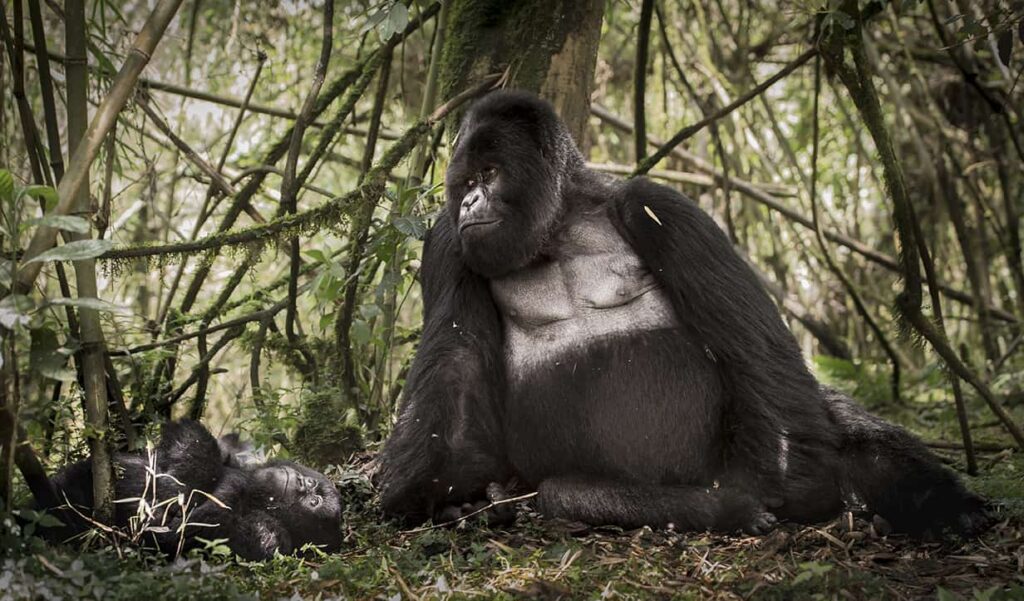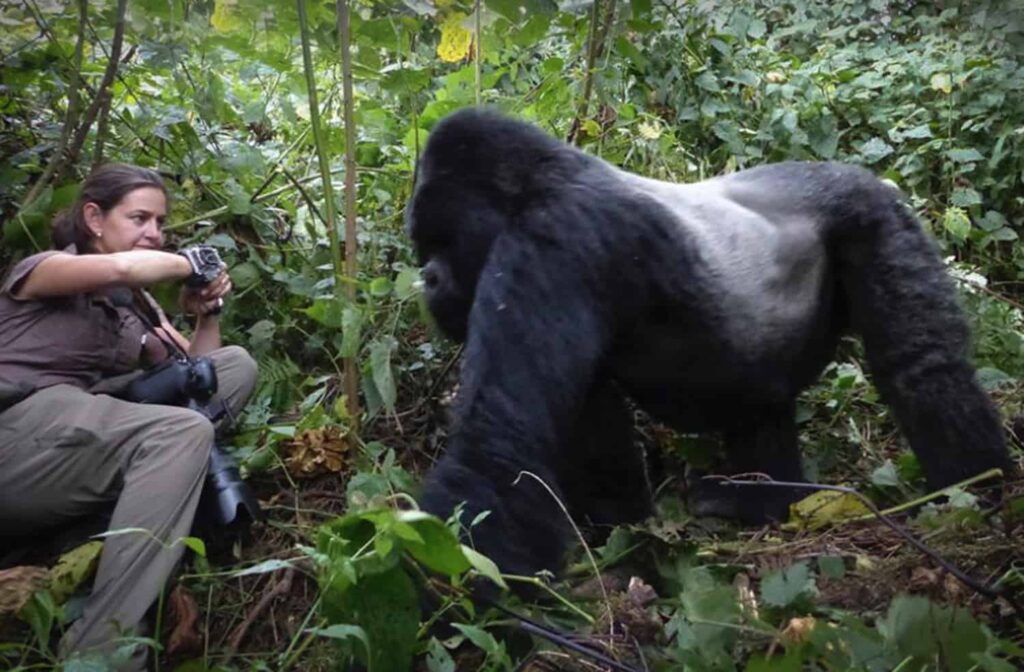HOW TO GET THE BEST RESULTS ON A MOUNTAIN GORILLA PHOTOGRAPHY WORKSHOP
Photographing Mountain Gorillas is a once-in-a-lifetime, Bucket List topping experience. BBC presenter and professional photographer Trai Anfield, who has guided several Mountain photography workshops, offers some insights that will help you make the most of this exhilarating encounter.
All images by Trai Anfield
Encountering Mountain Gorillas feels like a unique privilege. With less than a thousand of the gorillas remaining, they are a critically endangered species. The world’s remaining mountain gorillas live in three countries spanning four national parks—Bwindi Impenetrable National Park, Mgahinga Gorilla National Park, Volcanoes National Park, and Virunga National Park. On our upcoming Mountain Gorilla Photography Workshop, we’ll be photographing the animals in Uganda’s Bwindi National Park, which is home to the largest group of gorillas. Encountering them there is a truly humbling experience, explains Trai: ‘This is the most emotionally challenging and rewarding wildlife photo shoot I have had the privilege to experience. The intimate glimpse we gain into the family lives of these most human of animals is something you will never forget, especially when you have insightful images to bring back home.”
Find out how you can join an upcoming Mountain Gorilla Photography Workshop!
Close Encounters
Before we’ll set out on our gorilla trek in search for the animals, we’ll be briefed on what to do once we find them. “In brief,” explains Trai, “don’t try to stare down a gorilla, or tower over them in height – both are seen as threatening behaviour. Just crouch down, act subservient and avoid prolonged eye contact and you’ll be welcomed as one of the family!”
We’re also told to keep a distance of seven meters from the gorillas, to protect them from human germs. “However,” says Trai, “sometimes – in fact almost always – some gorillas will voluntarily come much closer than this. Don’t be afraid, as they are gentle as a rule, and it is a thrill and a privilege to be so close to these beautiful, intelligent animals.”
How to Photograph Mountain Gorillas
Needless to say, being so close to the gorillas will provide incredible photographic opportunities. To make the most of these, it’s good to be prepared. Trai offers some useful tips on how to get the best photographic results:
What Equipment to Bring: “I suggest bringing an SLR camera and a range of lenses. Given how close we are to the gorillas, I find my 70 – 200mm f2.8 very useful, although wider habitat shots from a 24-70mm are also very effective, and detail shots at 300 or even 400mm give amazing close ups, especially when shooting through foliage. Faster lenses (those that allow a wider aperture and have lower f-stop values) will work best here, as we will often be shooting in cloudy conditions and in the shadow of undergrowth and trees. They will also give a shallower depth of field and therefore a more pleasing blur to the surrounding foliage.
If you have two DSLR camera bodies I would advise taking both; one with a wider lens and one with a longer telephoto. Zooms and primes are both fine, but I personally prefer a flexible 70-200mm F2.8 and 200-400mm F4 set up, which also gives me some good options for video and saves changing lenses to get contextual shots and close-up shots. But please note that you can’t put anything down in the vicinity of the gorillas, in case they make off with it, so you’ll always have to ‘wear’ the camera you’re not actually using on a belt or neck strap.
If you have one DSLR camera body you may wish to consider one of the zooms with a wider range such as 70-300, 80-400 etc, bearing in mind that faster lenses are preferable. Of course, if you have a bridge or compact camera with a super zoom you won’t have to worry about either wide angle or telephoto shots, as it’s all there in one neat package: you can bring any kind of camera gear you have and I’ll help you get the very best out of it.”
Camera Settings: “First of all, turn your flash off. No flash photography is allowed around the gorillas. In terms of shooting mode, I usually shoot in aperture priority mode because in my experience the light conditions are changing constantly as the gorillas move from light to shade. If there was consistent diffuse light from thick cloud cover I might consider switching to manual mode. Shoot in RAW if you are confident to do so. It gives you much greater scope to post process and be creative with your images.”

ISO & Shutterspeed: “Gorillas will often be in the shade of the forest canopy, so high ISO values will be needed to generate sufficiently high shutter speeds. As you’ll have to hand-hold your long lens remember the rule of thumb and keep your shutter speed faster than 1/focal length. Much faster in the case of youngsters playing and barreling through the undergrowth! Then you’ll need at least 1/1000th second.”
Exposure Compensation: “You may need to dial in negative values to around -2 to preserve the tones and details in faces and fur in dark conditions, and for gorilla close-ups where they fill the frame. Do also be careful if gorillas are out in the open in harsh sunlight: their fur can be quite shiny and the resulting highlights are easy to burn out.”
Focus and Metering: “I personally prefer to stay in AF-Continuous / AI-Servo most of the time, as you never know when youngsters in particular are going to start moving around fast. I normally also stick with a single focus point and spot metering to ensure my composition and exposure of the subject is bang on.”
 Don’t forget to put your camera down!
Don’t forget to put your camera down!
But while we’re after that perfect picture, we obviously don’t want to forgot to just enjoy this unique encounter, explains Trai. “It’s easy to just fire away at every opportunity, but try to focus on a range of shots you would like to capture – wide and close portraits, details, various behaviours and interactions etc and watch for those opportunities as well as the spontaneous shots. And this amazing wildlife experience shouldn’t just be about the photography, so my top tip is to put down your camera every so often, and just marvel at being trusted by these wonderful animals and welcomed into their family for a while.”
Is your photographic appetite invoked? There are 4 spaces left on our upcoming wildlife photography workshop in Uganda, where we’ll spend two days photographing Mountain Gorillas!
Find out more about Trai Anfield on her website






